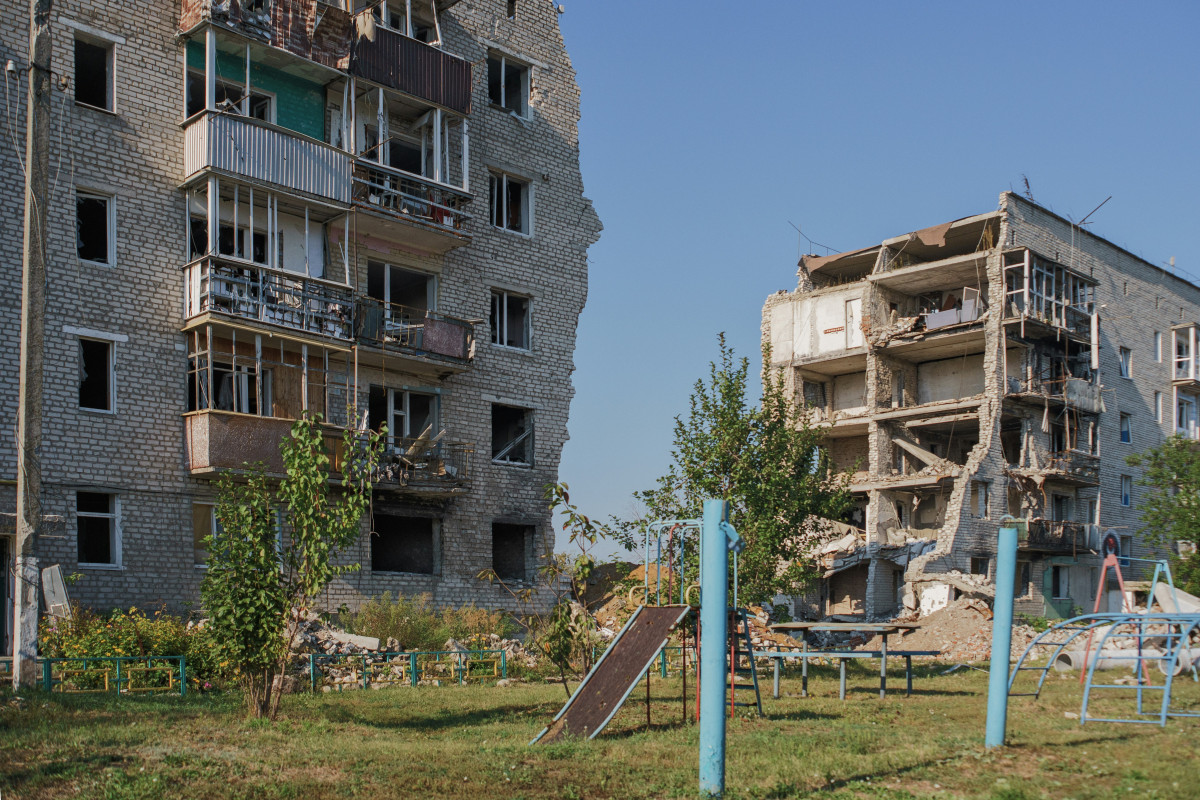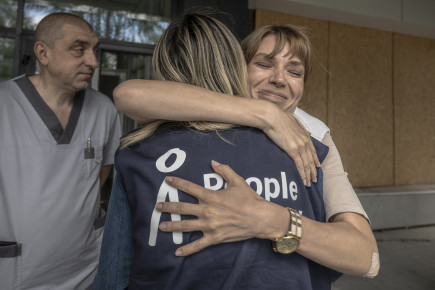Ukrainian Refugee Crisis: The Current Situation
Published: Jun 18, 2025 Reading time: 8 minutes Share: Share an articleRussia's full-scale invasion of Ukraine caused, among other things, the largest forced migration in Europe since the end of World War II. Up to a third of Ukraine's population has been displaced. More than three years later, ten million Ukrainians still find themselves living outside of their homeland. About a third of them are displaced within Ukraine, and seven million have found refuge abroad.

Mass migration triggered by Russia's invasion is not simply about people fleeing Ukraine to the nearest safe country; it has become more complex. This intricacy has become particularly evident in recent months as the movement of refugees from countries directly bordering Ukraine has expanded further west, mainly to Germany, but also as far as Canada, where there is a robust Ukrainian diaspora. Many Ukrainians maintain contact with home through short-term moves back and forth, building on pre-existing patterns of seasonal labour migration. Millions of refugees have returned permanently to Ukraine, but rarely to the areas from where they fled.
The situation in Europe - number of Ukrainian refugees by country
The United Nations High Commissioner for Refugees (UNHCR) estimates that there are currently around 5.1 million Ukrainian refugees in Europe.
The distribution of refugees has undergone significant changes over the past year. While Poland was still the country with the highest number of forcibly displaced persons in 2022, Germany is now the leading destination. According to newly revised statistics, there are now over 1.2 million Ukrainian refugees in Germany. Monthly arrivals fluctuate, but remain significant. In the spring of 2025, there were approximately 3,000 new arrivals per month.
The refugee situation has changed dramatically in Poland, too. Of the more than 1.6 million refugees to whom Poland granted temporary protection, "only" about one million of them remain in the country (alternative sources state 600-700 thousand). Hundreds of thousands of Ukrainians left in 2022, most travelling to Germany and other Western European countries.
Currently, the number of temporary protection holders in Poland is stable. However, it should be noted that there is a lot of movement on the Polish-Ukrainian border. Circular movements in both directions amount to tens of thousands of people per day, according to the Polish border guards. The most common reason for this is the temporary return of Ukrainians to visit family members.
Focusing on the number of refugees per capita, the Czech Republic tops the EU ranking, with about 35 Ukrainian temporary protection holders per 1,000 inhabitants. Only Moldova, outside the EU, reports a higher proportion of refugees per capita. Refugees there make up about 20% of the population.
Of the Western European countries, Germany does not have the highest relative number of refugees, but perhaps somewhat surprisingly for many, Ireland does. Currently, about 112,000 Ukrainian citizens live in Ireland with temporary protection. This rapid growth has only stopped due to the drastic reduction of social support for new arrivals that came into effect as of April 2024.
In this context, it is important to note that in the case of Ireland, as in Germany and Austria, the Ukrainian refugee crisis is just one of many. The mass arrival of Ukrainians is occurring at the same time as record numbers of asylum seekers from non-European countries such as Syria, Afghanistan, Sudan, and Venezuela are also arriving in these countries.
Canada and the USA
A significant number of Ukrainian refugees have left to seek sanctuary overseas. More than half a million Ukrainians have headed to Canada and the US since February 2022. Both of these introduced special visa regimes for Ukrainian refugees. Those interested in staying in Canada are admitted through the CUAET (Canada-Ukraine Authorization for Emergency Travel) programme, through which they can obtain work and study permits, among other things, from within the country. Interest in the programme is high - by April 2024, Canadian authorities had registered about 1.2 million applications. Nearly one million of them have already been approved, but the number of people who have taken advantage of the entry permit is significantly lower. According to the latest data, only about 300,000 Ukrainian citizens have headed to Canada through the CUAET programme.
Nearly all of the approximately 270,000 Ukrainians who fled to the U.S. have been granted either Temporary Protected Status or (for those who arrived after April 1, 2022) a special humanitarian visa granted under the Uniting For Ukraine (U4U) programme. The basic principle of the U4U visa, which is valid for two years, is that it unites individuals with families already legally residing in the U.S. This sponsorship role can be taken on by relatives or friends of applicants, as well as volunteers from the general public. In January 2025, after the Trump administration took office, the U4U programme was suspended.
The relatively high interest of Ukrainians in emergency movement to Canada and the USA can be explained, in part, by their deep and rich migration history. There has been a robust Ukrainian diaspora in both North American countries since the nineteenth century.
Russia
The data on the number of refugees heading east to Russia remains highly uncertain. Official Russian sources from the so-called power structures speak of 5 and sometimes even more than 7 million refugees a year after the start of their "special military operation". According to an analysis by experts from the Russian non-profit organisation The Civic Assistance Committee, these figures reflect the number of people crossing the Russian border and are drastically overestimated. Many experts estimated the actual number of displaced people at 1.2 million.
Not much is known about the fates of Ukrainians who resettled in Russia. Based on a previously adopted government resolution, the new arrivals are redistributed across all 85 Russian regions, starting with the Voronezh and Rostov regions, which border Ukraine, and ending in Chukotka, seven thousand kilometres away.
Information regarding the legal status of displaced people is also murky. Instead of refugee status, which is virtually unheard of in Russia, those arriving from Ukraine in 2022 were often granted 'temporary shelter' (vremennoye ubezhishche), which in practice meant fewer rights for them and the obligation to re-register regularly. However, the latest data from the Ministry of the Interior shows that the number of temporary refuge holders is steadily decreasing.
While Russia generally refers to transfers from occupied territories as "evacuations", from the perspective of the international community—given Russia's non-recognition of its annexations—they are deportations. As of March 2023, the International Criminal Court in the Hague has issued an arrest warrant for Russian President Vladimir Putin in connection with the abduction of Ukrainian children. Nearly 20,000 of them have been taken to Russia, according to conservative estimates. According to other sources, the number is many times higher.
Returns
A non-negligible part of the refugees have already returned to their homeland. UNHCR registered over 5 million border crossings towards Ukraine at the end of 2024. However, this figure also includes people who move across the border repeatedly. In April 2024, the International Organization for Migration (IOM) estimated the real number of returnees from abroad at 1.2 million.
Refugees' return plans change over time. More and more people see their future and that of their children in the countries where they now live, rather than in Ukraine. In the Czech Republic, according to the latest surveys, this is about two-thirds of the displaced. Only about a fifth of those interviewed want to return (the rest cannot answer).
Recently, Ukraine has been increasing its efforts to return as many refugees as possible. The newly established Ministry of Unity should also help. However, both leading Ukrainian officials and independent experts agree that a mass return will only be possible if three basic conditions are met, which are work, housing and security.
Internally displaced persons (IDPs)
An often overlooked but integral part of the Ukrainian refugee crisis is internal displacement. According to the IOM report from January 2025, the number of internally displaced persons (IDPs) is approximately 3.7 million. However, this does not include the number of people who were already displaced before February 24, 2022. These two groups added together would total five million, according to Ukrainian authorities.
Almost half of all those displaced come from the Kharkiv and Donetsk regions. The distribution of internal refugees has changed significantly over time: if in the first months of the war most people sought refuge in the west of the country, most of them remain in the east, most affected by the war. Almost a million internally displaced persons now live in the Dnepropetrovsk and Kharkiv regions alone. A very high number of IDPs—nearly 700,000— reside in Kyiv and its surroundings.
The socio-economic situation of internally displaced persons worsens with increasing duration of displacement. Surveys regularly conducted by IOM, for example, show that two-thirds of households have already exhausted all financial savings. Only about half of displaced people of working age have managed to find work, often less qualified and lower paid than before. There is a significant dependence on humanitarian aid: while in the rest of the population, “only” one person in five has to use it to some extent, among displaced persons, it is every second person.



